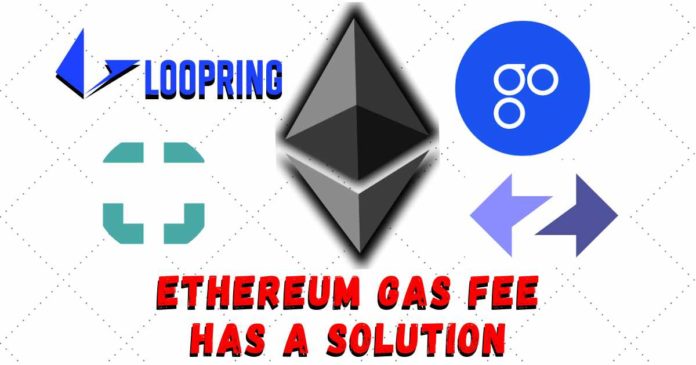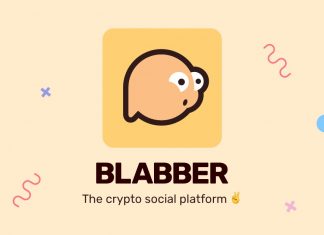The Ethereum gas fee actually became a choke point for ETH traders last week. As the average transaction fees soared to $15.29 on September 2, many traders faced transaction delays and rejections. Disappointingly, the gas fee consumed the entire transaction amount for some traders.
It is a common opinion that the explosion of DeFi and the popularity of Tether have triggered the explosive Ethereum gas fee hike. Some suggest Ethereum 2.0 could be a solution, but the reality is that its mainnet launch is months away.
So, is there no solution to reduce the ETH gas fees?
Vitalik Buterin says solutions exist
After hearing a lot of bashing, Vitalik Buterin gave his opinion about the gas fee solutions. According to Vitalik, increasing the throughput is the solution to put an end to the gas fee issue.
In this vein, he emphasizes that Layer 2 solutions by zksync, Loopring, and Omisego that scale up to 2,500 plus TPS (transactions-per-second) are a go-to solution for a high gas fee.
Loopring
Vitalik believes rollup and sharding are the best solutions to increase scalability. Loopring is the first and only 100% rollup payment solution on Ethereum. Its popularity has been touching the sky with the ETH gas fee hike episode. As a layer 2 solution, Loopring offers a simple UI on the website so that it’s easy to use for a novice ETH trader too.
Furthermore, Loopring is a protocol that is used to build non-custodial, high-performance, order book exchanges on Ethereum using zkRollup. Using zkRollup increases scalability as it conducts mass transfers by bundling hundreds of transfers into one transaction.
According to Loopring’s monthly update, Loopring protocol 3.6 is close to code completion and will be ready for external audits soon.
About a month back when DataDash founder Nicholas Merten asked Vitalik the most immediate solution to lower on-chain network fees, Vitalik recommended Loopring.
@VitalikButerin as someone who's built an Ethereum smart wallet, I wanted to ask you 2 things:
1. What's the most immediate solution ETH could implement to lower network fees on-chain?
2. What's the best tech we could implement to play our part in reducing gas consumption?
— Nicholas Merten (@Nicholas_Merten) August 4, 2020
zkSync
As a trustless layer 2 scaling solution, zkSync is the first zkRollup with no application-specific trusted setup. On June 18, 2020, the project announced the launch of zkSync v1.0 on its mainnet. Built using zkRollup technology, zkSync is progressing ahead to build a 2,000 TPS solution to greatly reduce the ETH gas fee costs.
It offers its users a very intuitive UX that works with any ETH wallet. The good news for developers is that zkSync is very easy to integrate into their projects.
OmiseGo
On June 1, 2020, OmiseGo shipped its OMG Network V1 Mainnet Beta. It is a layer 2 scaling solution that promises to reduce the gas fee by 66%. The solution groups hundreds of Ether and ERC20 transactions together to scale the network. By employing this, high throughput of thousands of TPS is achieved that results in 1/3rd the transaction cost without compromising the security.
Here is a video on our Altcoin Buzz YouTube channel discussing the solutions in detail.
2nd layer stable chains for scaling – xDai Chain
While the world was busy paying outrageous fees for moving their ETH, xDai Chain’s @RaidGuild was deploying solutions to ease the gas fees pain on the Ethereum mainnet.
The @RaidGuild xDai Squad is in full force 🔥⚔️ ! $xDai integrations deploying this very moment to help ease the pain of over-the-top 🎪 gas fees happening on #ethereum mainnet. https://t.co/pM2T4qcGLg
— Gnosis Chain 🦉 (@gnosischain) September 1, 2020
xDai Chain is the first USD stable blockchain and it was born with an idea to not have volatile gas prices as the native coin was stable. As an EVM-based layer 2 sidechain, it uses the xDai stablecoin as the native currency. Basically, xDai is a Dai bridged from Ethereum 1:1. It is designed in a way so that xDai lives on a sidechain. Because of this, the transaction costs are extremely low.
Here is our in-depth article about xDai and how it supports fast, cheap, and no ETH gas fee transactions.
Join us on Telegram to receive free trading signals.
For more cryptocurrency news, check out the Altcoin Buzz YouTube channel.




























